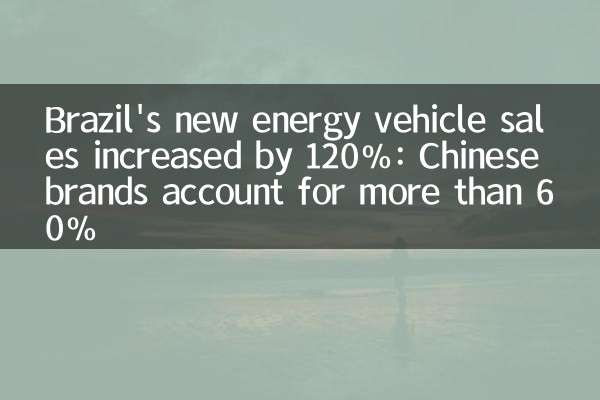How to increase capacitance: analysis of principles, methods and popular technologies
Capacitor is an important component in electronic circuits, and its capacity directly affects the performance of the circuit. With the development of science and technology, how to increase capacitance has become a hot topic for engineers and enthusiasts. This article will combine the hot topics on the Internet in the past 10 days, conduct a structured analysis of methods to increase capacitance, and provide practical data reference.
1. Basic principles and influencing factors of capacitance

The capacity of the capacitor is determined by the following formula:
C = ε₀εᵣA/d
in:
- C: Capacity
- ε₀: Vacuum dielectric constant
- εᵣ: Relative permittivity
- A: Plate area
- d: plate spacing
| Influencing factors | How to increase capacitance | Technical difficulties |
|---|---|---|
| Dielectric constant (εᵣ) | Use high dielectric constant materials | Material stability and cost |
| Plate area (A) | Increase the plate area or adopt a porous structure | Volume limit |
| Plate spacing (d) | Reduce plate spacing | Breakdown voltage risk |
2. Recently popular technologies for increasing capacitance
According to the technical trend analysis in the past 10 days, the following methods have received widespread attention:
| Technical name | principle | Capacity improvement | Application scenarios |
|---|---|---|---|
| Graphene supercapacitor | Taking advantage of graphene’s high specific surface area | Up to 5 times that of traditional capacitors | New energy vehicles |
| Solid electrolytic capacitor | Using high εᵣ solid materials | 2-3 times | consumer electronics |
| 3D stacked capacitor | Three-dimensional plate structure | 40-60% | integrated circuit |
3. Comparison of practical methods for increasing capacitance
For different demand scenarios, you can choose the following methods:
| method | cost | difficulty | Applicable scenarios |
|---|---|---|---|
| Parallel capacitor | Low | Simple | low frequency circuit |
| Replacing high dielectric materials | middle | medium | high voltage circuit |
| Nanostructured electrodes | high | difficulty | Scientific research field |
4. Capacitor technology breakthrough hot spots in 2023
According to the latest research trends, the following directions deserve attention:
1.MXene material capacitor: New two-dimensional material with a theoretical capacity of up to 10,000F/g
2.biodegradable capacitor: Progress has been made in the application of environmentally friendly materials
3.Quantum capacitance: Using quantum effects to break through classical limits
5. Precautions for increasing capacitance
1. Operating voltage limit: increasing the capacitance may reduce the withstand voltage value
2. Temperature effect: High dielectric materials are usually sensitive to temperature
3. Volume constraints: Capacity is usually proportional to volume
4. High-frequency characteristics: Large-capacity capacitors may affect high-frequency response
6. Future development trends
Comprehensive industry analysis shows that capacitor technology will develop in the following directions:
-higher energy density: Capacity increase per unit volume/weight
-Faster charging and discharging: Supercapacitor technology breakthrough
-Intelligent integration: Integration with IC technology
-Environmentally friendly: Pollution-free recyclable materials
By rationally selecting methods to increase capacitance, electronic system performance can be significantly improved. It is recommended to choose the most suitable technical solution based on specific application scenarios, balancing factors such as capacity, volume, cost, and reliability.

check the details

check the details